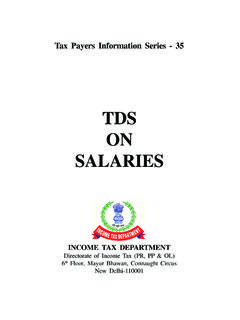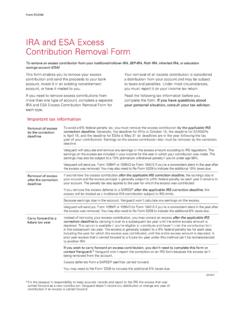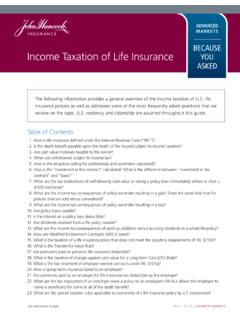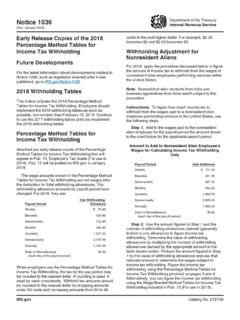Transcription of INTEREST ON EXCESS REFUND - Income Tax Department
1 [As amended by Finance Act, 2020] INTEREST ON EXCESS REFUND At times it may so happen that the taxpayer is granted EXCESS REFUND . Section 234D provides for levy of INTEREST on EXCESS REFUND granted to the taxpayer. In this part you can gain knowledge about various provisions relating to INTEREST on EXCESS REFUND granted to the taxpayer. Manner of computation of INTEREST under the Income -tax Act Before understanding the provisions of section 234D, it is important to understand the provisions of Rule 119A which gives the manner of computation of INTEREST under the Income -tax Act.
2 As per Rule 119A, while calculating the INTEREST payable by the taxpayer or the INTEREST payable by the Central Government to the taxpayer under any provision of the Act: a) where INTEREST is to be calculated on annual basis, the period for which such INTEREST is to be calculated shall be rounded off to a whole month or months. For this purpose, any fraction of a month shall be ignored and the period so rounded off shall be deemed to be the period in respect of which the INTEREST is to be calculated; b) where the INTEREST is to be calculated for every month or part of a month comprised in a period, any fraction of a month shall be deemed to be a full month and the INTEREST shall be so calculated; c) the amount of tax, penalty or other sum in respect of which such INTEREST is to be calculated shall be rounded off to the nearest multiple of one hundred rupees.
3 For this purpose any fraction of one hundred rupees shall be ignored and the amount so rounded off shall be deemed to be the amount in respect of which the INTEREST is to be calculated. , If we want to compute INTEREST under section 234D on Rs. 8,489 for 3 months and 10 days, then as per Rule 119A discussed above, while computing the amount liable to INTEREST , any fraction of Rs. 100 is to be ignored and, hence, we will ignore Rs. 89 from Rs. 8,489 and the balance amount will come to Rs. 8,400, thus INTEREST under section 234D will be computed on Rs. 8,400. Further, the period of 10 days will be considered as full month and, hence, INTEREST will be computed for 4 months.
4 The same rule will apply for computation of INTEREST under other sections too. Basic provisions If the taxpayer has paid EXCESS tax, then he will claim the REFUND of the same in his return of Income and it will be refunded to him. Many times it may happen that the taxpayer is granted a REFUND at initial stage, , at the time of intimation under section 143(1) and at a later stage ( , on regular assessment) the REFUND gets reduced. In such a case the EXCESS REFUND is recovered from the taxpayer along with INTEREST under section 234D. Under section 234D INTEREST is levied if any REFUND is granted to the taxpayer under section 143(1) and: [As amended by Finance Act, 2020] a) no REFUND is due on regular assessment; or b) the amount refunded under section 143(1) exceeds the amount refundable on regular assessment.
5 Regular assessment generally means an assessment under section 143(3), , scrutiny assessment or an assessment under section 144, , best judgment assessment. Assessment made for first time under section 147 or section 153A shall also be treated as regular assessment. Illustration Mr. Raja has filed his return of Income declaring a REFUND of Rs. 84,000. His return was processed under section 143(1) and REFUND was granted to him. Subsequently, his case was selected for scrutiny under section 143(3) and a regular assessment was made under section 143(3). In the regular assessment, his REFUND was reduced to Rs.
6 50,000. Will he be liable to pay any INTEREST under section 234D? ** Under section 234D INTEREST is levied if any REFUND is granted to the taxpayer under section 143(1) and: (a) no REFUND is due on regular assessment; or (b) the amount refunded under section 143(1) exceeds the amount refundable on regular assessment. Regular assessment generally means an assessment under section 143(3), , scrutiny assessment or an assessment under section 144, , best judgment assessment. Assessment made for first time under section 147 or section 153A shall also be treated as regular assessment.
7 In this case initial REFUND of Rs. 84,000 was granted after processing the return under section 143(1) and, subsequently, on regular assessment the REFUND was reduced to Rs. 50,000. Hence, in this case Mr. Raja was granted EXCESS REFUND of Rs. 34,000. He will be liable to repay the EXCESS REFUND amount received earlier ( Rs. 34,000) along with INTEREST under section 234D. In other words, Mr. Raja will be liable to pay INTEREST under section 234D on the EXCESS REFUND of Rs. 34,000 (provisions relating to rate of INTEREST and period of INTEREST are discussed later).
8 Rate of INTEREST INTEREST under section 234D is levied @ % per month or part of the month. Period of levy of INTEREST INTEREST is levied from the date of grant of REFUND under section 143(1) till the date of regular assessment. Regular assessment means an assessment under section 143(3) or section 144. Assessment made for first time under section 147 or section 153A shall also be treated as a regular assessment. [As amended by Finance Act, 2020] Illustration The tax liability of Mr. Soham for the financial year 2017-18 came to Rs. 84,000. He has paid advance tax of Rs. 1,00,000 and there was a TDS credit of Rs.
9 4,000 in his account. He filed the return of Income on 15th July, 2018 claiming a REFUND of Rs. 20,000. His assessment was completed under section 143(1) and he was granted REFUND of Rs. 20,000 on 15th January, 2019. Subsequently, his case was selected for scrutiny and his Income was assessed under section 143(3). As per the assessment order dated 29th August, 2019, his Income was recomputed after making certain additions and his revised tax liability was computed at Rs. 1,00,000. Will he be liable to pay INTEREST under section 234D, if yes, then for what period? ** Under section 234D INTEREST is levied if any REFUND is granted to the taxpayer under section 143(1) and: (a) no REFUND is due on regular assessment; or (b) the amount refunded under section 143(1) exceeds the amount refundable on regular assessment.
10 Regular assessment generally means an assessment under section 143(3), , scrutiny assessment or an assessment under section 144, , best judgment assessment. Assessment made for first time under section 147 or section 153A shall also be treated as regular assessment. In this case, the tax liability of Mr. Soham as per return of Income was Rs. 84,000 and he has paid tax of Rs. 1,04,000 (Rs. 1,00,000 advance tax + Rs. 4,000 TDS). Initially, he was granted REFUND of Rs. 20,000 after processing the return under section 143(1). Subsequently, on regular assessment his tax liability was determined at Rs.
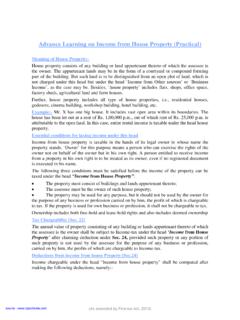
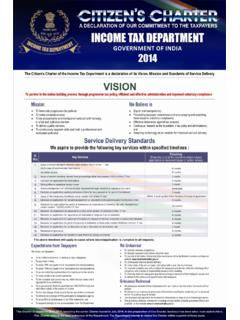
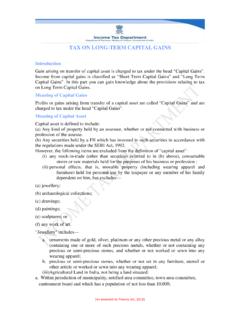
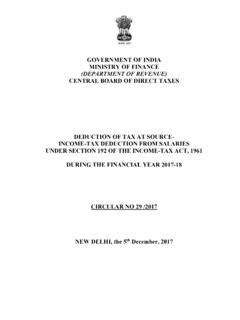

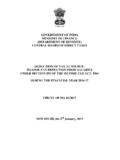
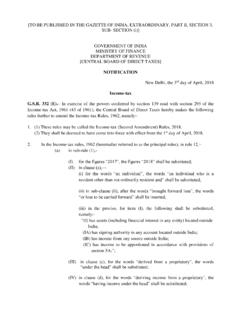
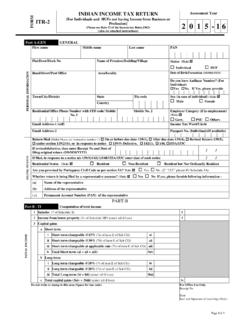
![FORM NO. 3CA [See rule 6G(1)(a)] Audit report …](/cache/preview/5/e/9/7/6/b/7/4/thumb-5e976b74d05a63207c471fc48a86f3e5.jpg)
